Every town has its legends; part of the fun of being a curious historian is investigating them. In this case, we are looking at a courageous young woman from Dedham who played a small role in the legend of “The Angel of Hadley.”
Dedham, known to the Native Americans as Tiot, was settled by English colonists in 1635. Strongly Puritan in their beliefs, the Dedham settlers were escaping the political and religious struggle that would, in seven years, become the English Civil War. In its simplest terms, the war was a struggle between Royalists supporting King Charles I and Parliamentarians seeking a constitutional monarchy. The power struggle was both political and theological, with many of the Parliamentarians also Puritans seeking reform of the Anglican Church (of which the King was Supreme Governor). The execution of King Charles I on 30 January 1649 and the exile of his son, Charles II, brought a nine-year period in which Parliamentarians controlled England under Oliver Cromwell, ruling as Lord Protector of England, Scotland, and Ireland. With Cromwell’s death in 1658 and the restoration of King Charles II, the balance of power shifted again, leaving the New England colonies of Massachusetts and Connecticut as the last remaining outposts of Puritanism.
Captain Daniel Fisher (1619-1683) was one of Dedham’s most influential Puritan leaders. Born in Syleham, Suffolk, England, he emigrated to the New World in 1637 with his father, Anthony, and five siblings, ultimately settling on Lowder Street, just south of present-day High Street. Fisher served the town as a lawyer, militia captain, and General Court representative for 22 years.
Just west of the Fisher home site on Lowder Street lies Rodman Pond. Sandwiched between Route 109, a preschool, and a new residential subdivision, it’s not an imposing body of water; many early maps omit it entirely. The location was undoubtedly much less hospitable during the winter of 1661 when Daniel Fisher’s 8-year-old eight-year-old daughter Lydia is said to have made her way there from the family’s home, carrying food for two men hidden in the woods nearby. We don’t know whether she knew the men’s identity. The secret with which her father had been entrusted was of such importance and the danger so great that history did its best to erase any record of their existence.
Fisher’s overnight visitors had arrived in Boston from England six months before. General Edward Whalley was a Parliamentarian cavalry officer during the English Civil War and a cousin to Oliver Cromwell. Whalley’s traveling companion was his son-in-law, General William Goffe. The two men were among the 59 Commissioners who had signed the death warrant of King Charles I in 1649. With the restoration of the monarchy in 1660, the surviving Commissioners became the most wanted fugitives in Britain. Ten were apprehended, hanged, drawn, and quartered by a vengeful King Charles II, and another 19 were sentenced to life imprisonment. Oliver Cromwell, already dead, had been disinterred, hung posthumously at Tyburn gallows, and then beheaded. Whalley and Goffe slipped out of the country and fled to Boston days ahead of Royalist agents armed with arrest warrants.
While embraced as heroes by the Puritan leaders of the Massachusetts Bay Colony, Whalley and Goffe’s presence was a real danger to a colony that existed under a royal charter. Those who granted the fugitives asylum risked imprisonment and death. Unable to remain, the two men left Cambridge on 26 February 1661, allegedly stopping in Dedham on their way south and reaching the New Haven Colony on 7 March. There, they were initially hidden by one of the Colony’s founders, Reverend John Davenport, who is said to have exhorted his congregation in the words of Isaiah 16:3 to “Hide the outcasts, betray not him that wandereth.” Later, the two men hid in a cave within what is now West Rock Ridge State Park for some months.
In 1664, with the long arm of the crown drawing ever closer, Whalley and Goffe fled again, this time north to the frontier village of Hadley, Massachusetts, where they lived out the remainder of their lives in a secret room within the house of Reverend John Russell. In 1670, Lydia, by then a young woman of 17, accompanied her brother Daniel to Hadley, where she spent approximately a year living with the Russell family and attending to the needs of the fugitives.
Lydia Fisher returned from Hadley in about 1671. In October of 1674, she married Nathaniel Chickering of Dedham as his second wife, and the couple had nine children. On Nathaniel’s death in 1694, she moved into the house he had built for them in what is today the town of Dover.
The Chickering farm survives as 77 Haven Street, although a descendant replaced the original house with the present one in 1767, and another remodeled it a century later.
Whalley and Goffe remained sequestered in Reverend John Russell’s house for the rest of their lives, with Whalley dying in about 1675. On Sunday, 1 September 1675, in the midst of King Philip’s War, Reverend Russell’s service is said to have been interrupted by Native Americans attacking the town. More than a century later, the President of Yale College, Ezra Stiles, published the first known account of an individual later known as “The Angel of Hadley.”
Suddenly, and in the midst of the people there appeared a man of very venerable aspect, and different from the inhabitants in his apparel, who took command, arranged, and ordered them in the best military manner, and under his direction they repelled and routed the Indians, and the town was saved. He immediately vanished, and the inhabitants could not account for the phenomenon, but by considering that person as an Angel sent of God upon that special occasion for their deliverance; and for some time after said and believed that they had been delivered and saved by an Angel. 1
The mysterious leader, thought to have been William Goffe, is portrayed in Frederic A. Chapman’s painting The Perils of Our Forefathers, now in the collection of the Forbes Library in Northampton. Historians disagree as to the veracity of the legend, with some arguing that there is no record of an attack on Hadley in September of 1675 and others believing that word of the event was deliberately suppressed to protect the secret of Goffe’s presence. Did William Goffe emerge from seclusion and save Hadley from a massacre? It may be an unanswerable question at this point, but there is ample evidence that he was at least present in the Russell house at the time the attack is supposed to have occurred. Goffe died at some point after 1679. He and Whalley were allegedly buried in the basement of Reverend Russell’s house, with the secret of their presence not known even to the townspeople of Hadley until after Reverend Russell’s own death in 1692.
Lydia (Fisher) Chickering didn’t divulge the story of her journey to Hadley until late in her life when she confided in her minister, Reverend Jonathan Townsend of Needham. Townsend recorded it in his diary on 17 July 1737:
This day died here Mrs. Lydia Chickering in the eighty-sixth year of her age. She was born at Dedham in New England on July 14, 1652, and about the year 1671 went up from there to Hadley where, for the span of about a year, she waited upon Col. Whalley and Col. Goffe (two of King Charles 1st judges) who had fled thither from the men that sought their life. She was the daughter of Capt. Daniel Fisher of Dedham, one of the magistrates of this Colony under the old Charter. Having lived a virtuous life, she died universally respected, and came to her grave in a full age, as a shock of corn cometh into his season.”2
Whalley and Goffe’s stay at Rodman’s Pond survived as a Fisher family legend, recorded in Philip A. Fisher’s comprehensive family genealogy published in 1898.
About 1671 [sic], Col. Goffe and Col. Whalley, two of the regicide judges of Charles I, were hidden by Captain Daniel in a little wood back of his house on Lowder Street, near a pond. While there secreted, Captain Daniel’s daughter, Lydia, carried them their food.3
Fisher's date was off by a decade, but the account is otherwise plausible. The 135-mile journey would have taken five or six days on horseback. Along the way, Whalley and Goffe would necessarily have depended upon a network of trusted clergymen and other Puritan sympathizers for food and shelter. The Fisher property, encompassing 140 acres and known as Tiotswood Farm, remained in the hands of Daniel Fisher’s descendants, the Rodman family, until at least 1945.
Ezra Stiles, A History of Three of the Judges of King Charles I (Hartford: Printed by Elisha Babcock, 1794), 109.
Colonial Society of Massachusetts, Publications of the Colonial Society of Massachusetts, Transactions, Volume 21 (Boston: The Society, 1919), [Periodical] Retrieved from the Society, https://www.colonialsociety.org/node/259
Philip A. Fisher, The Fisher Genealogy, Record of the Descendants of Joshua, Anthony and Cornelius Fisher, of Dedham, Mass., 1636-1640 (Everett, Mass: Massachusetts Publishing Company, 1898), 35.

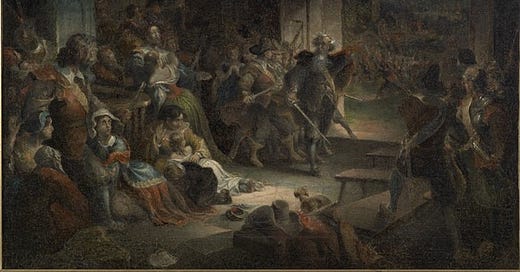


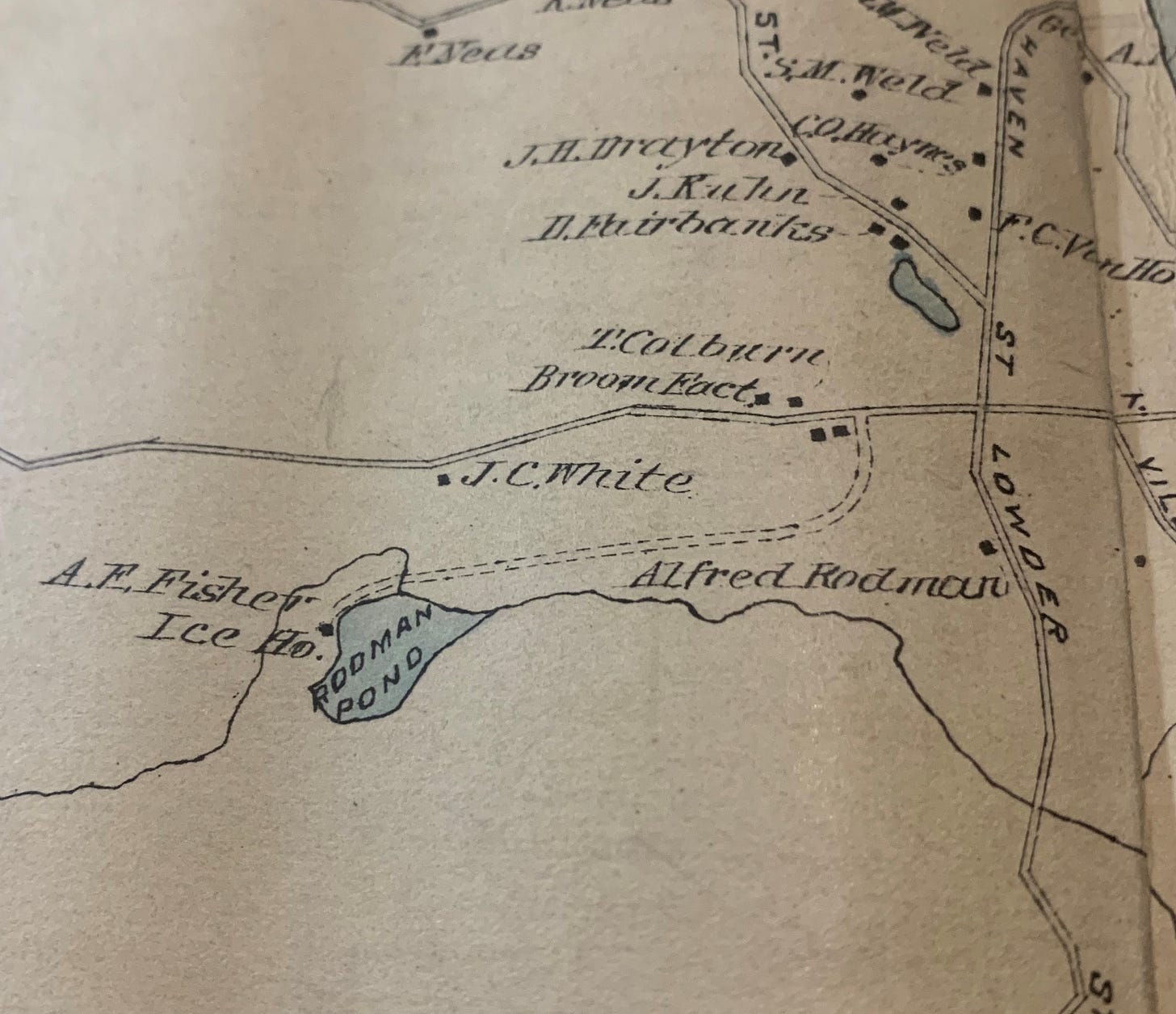
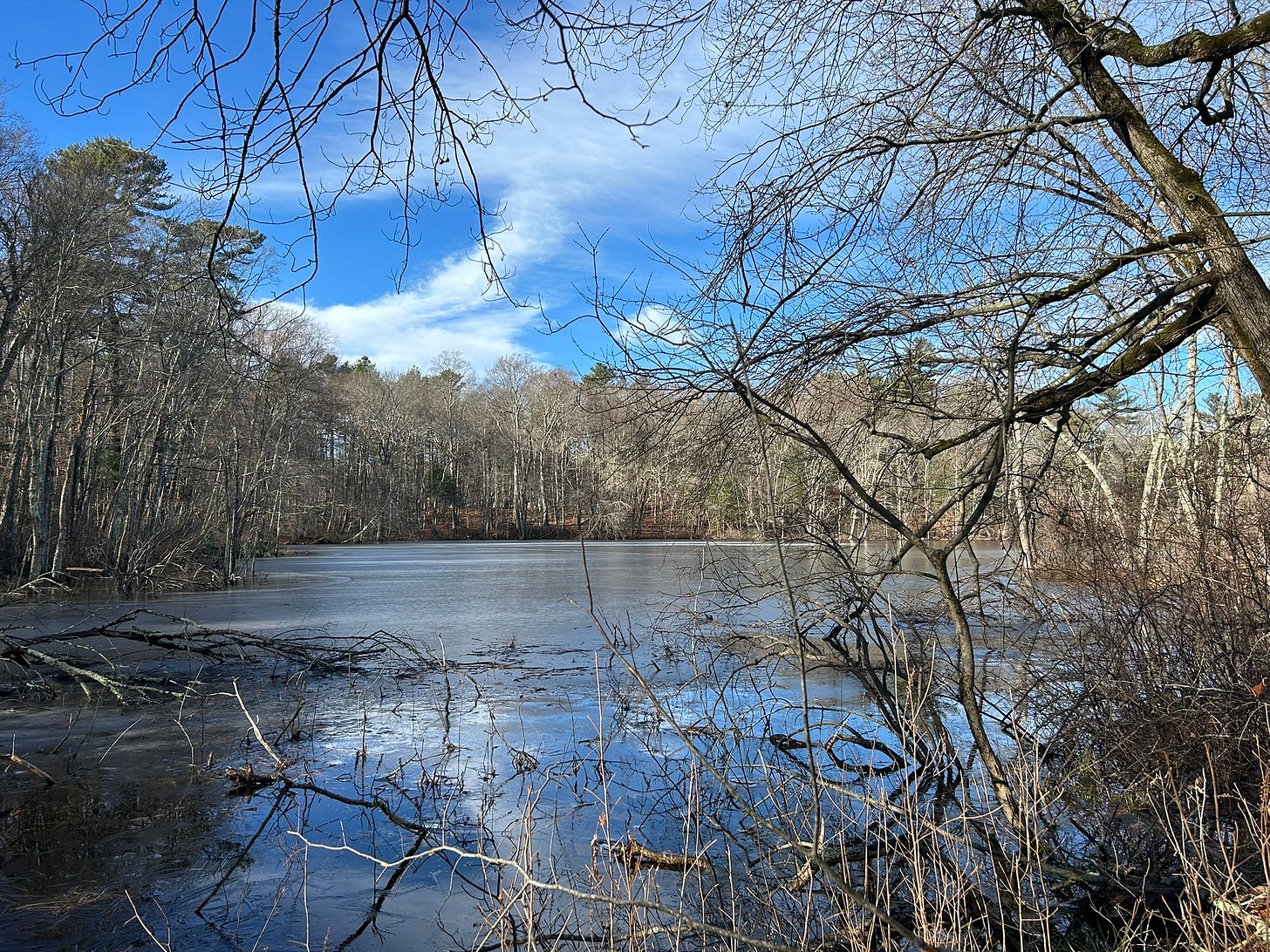
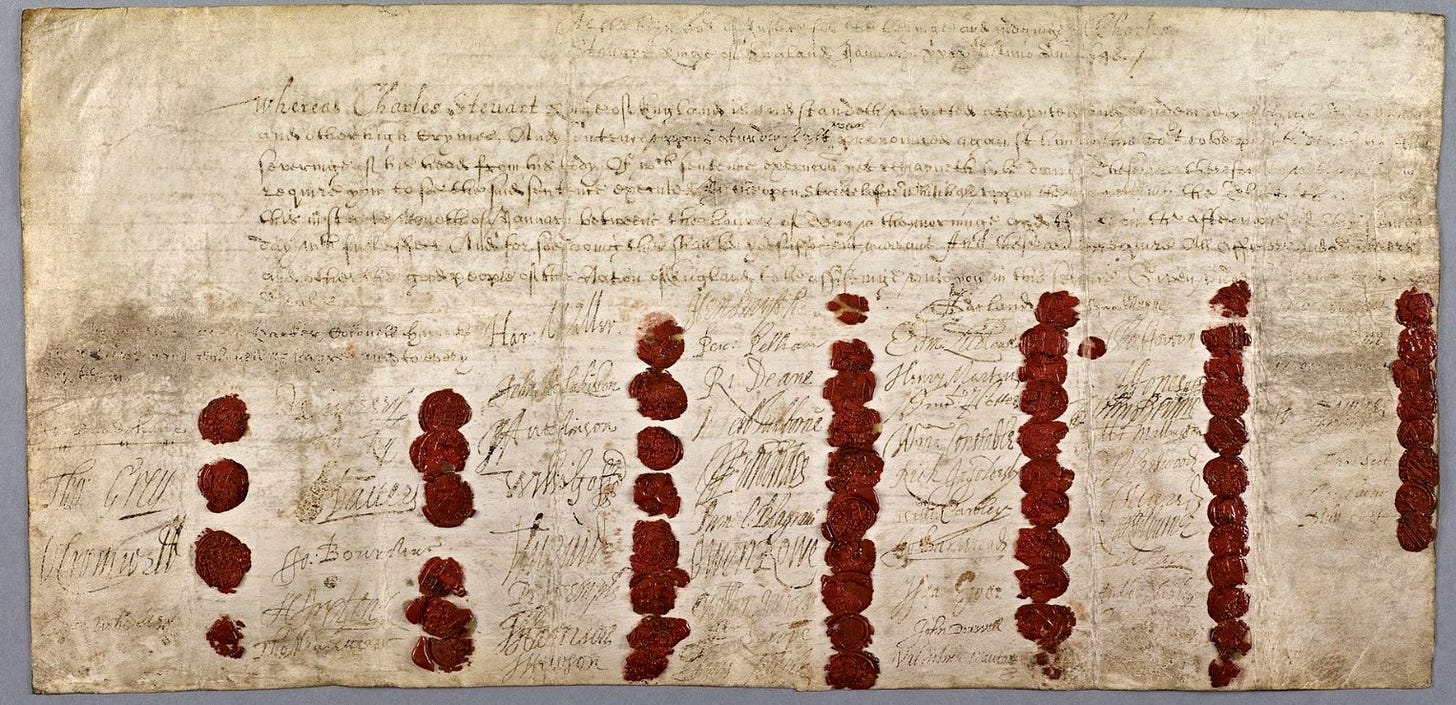
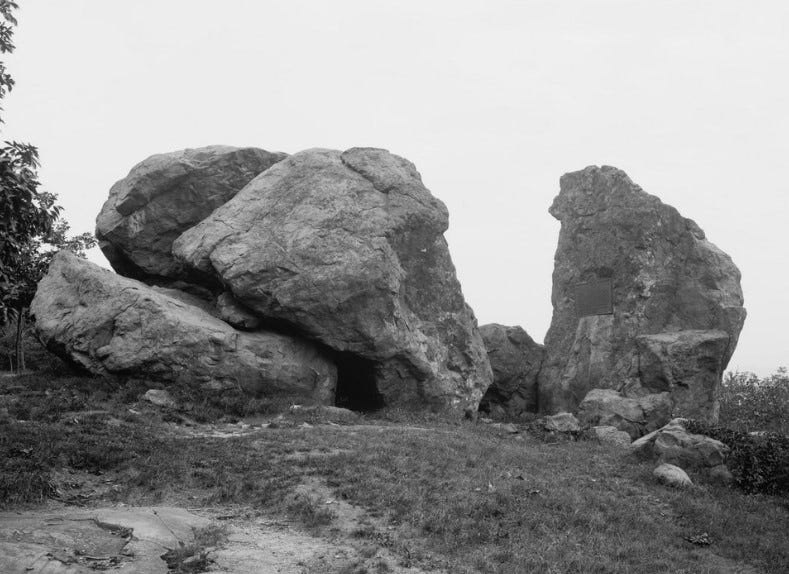
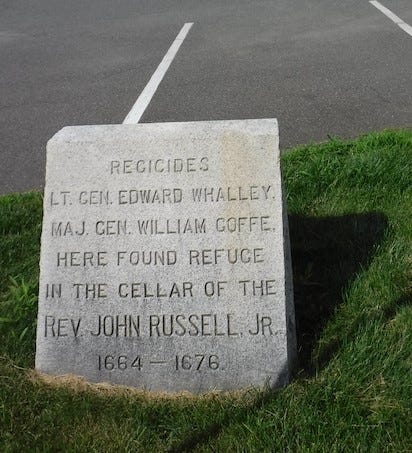


Fascinating and extremely well written story, Elisha. Thank you!
Great story, Elisha. Thanks.